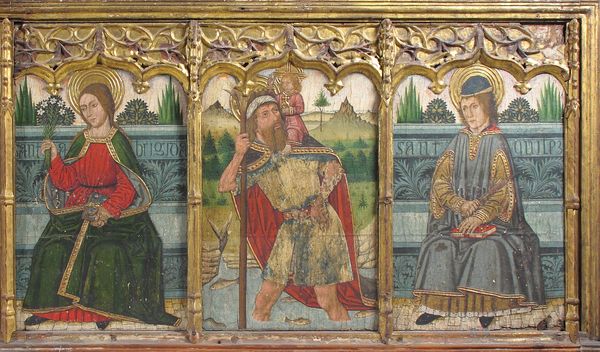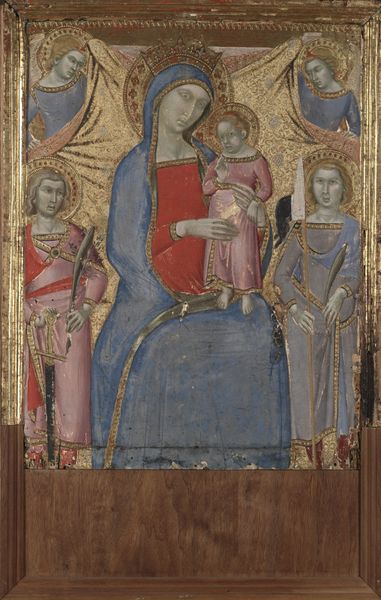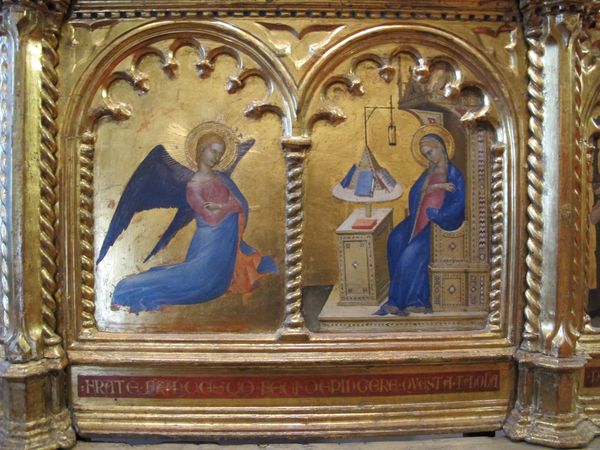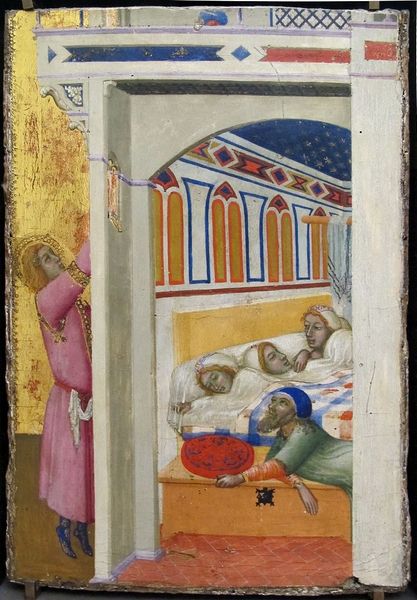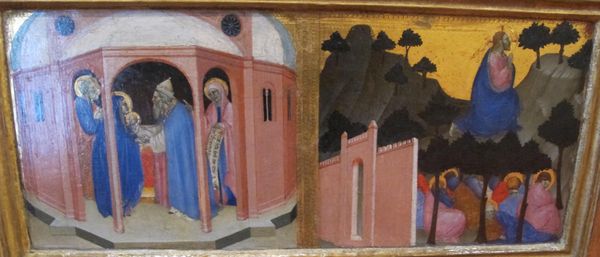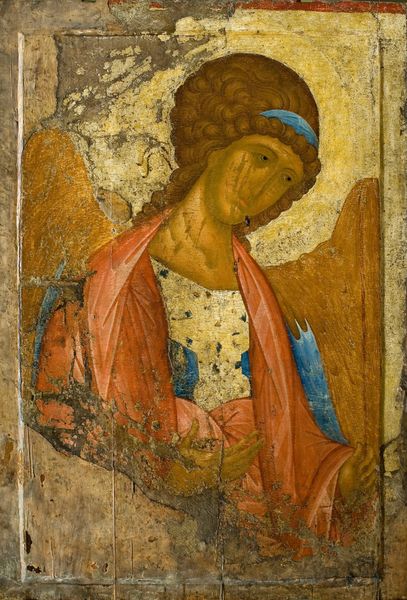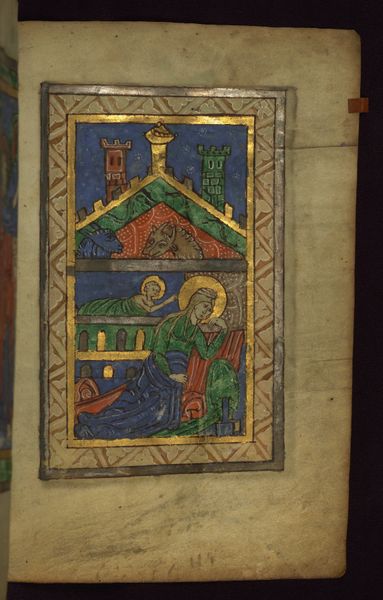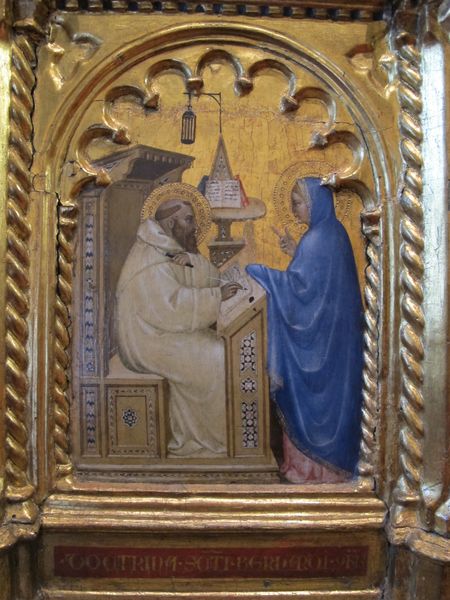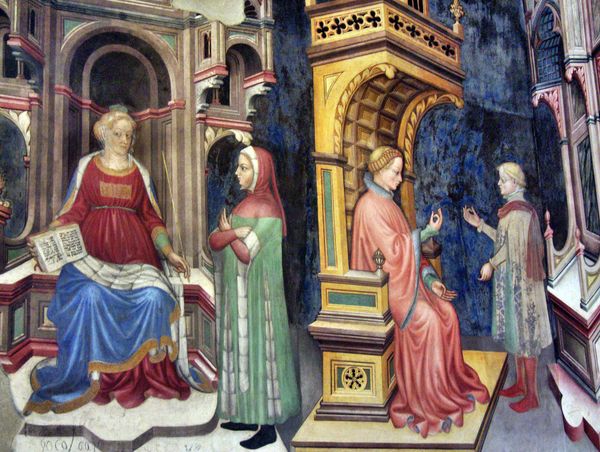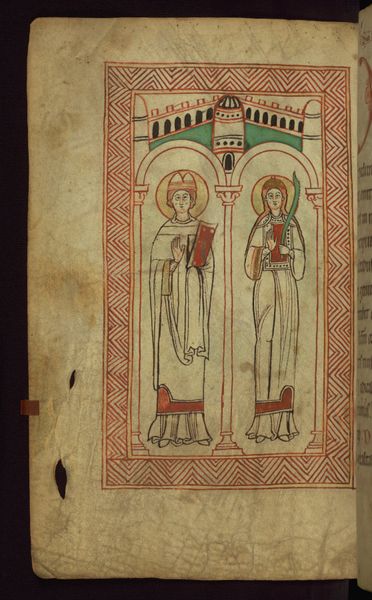
panel, tempera, painting, gold
#
medieval
#
panel
#
narrative-art
#
tempera
#
painting
#
gold
#
gothic
#
figuration
#
oil painting
#
italian-renaissance
#
angel
Dimensions: Top left 9 3/4 x 3 7/8 in. (24.8 x 9.8 cm); center left 11 1/8 x 5 1/4 in. (28.3 x 13.3 cm); bottom left 9 7/8 x 3 7/8 in. (25.1 x 9.8 cm); top right (9 3/4 x 3 7/8 in. (24.8 x 9.8 cm); center right 11 1/8 x 5 1/4 in. (28.3 x 13.3 cm); bottom right 10 x 3 7/8 in. (25.4 x 9.8 cm)
Copyright: Public Domain
Curator: Here we have "Six Angels," an exquisite panel by Jacopo di Cione, dating back to 1360-1370. It's a tempera and gold painting, and we are fortunate to have it here at the Metropolitan Museum of Art. Editor: Oh, that gold just shimmers, doesn't it? And the angels... there's a fragility to them, a sort of melancholic grace. Are they grieving, perhaps? Curator: Indeed. They are witnesses to the crucifixion. What’s particularly fascinating is how di Cione balances the divine with the human, the heavenly figures rendered with such palpable emotion. The choice of tempera on panel is interesting; that lends the colors such depth and vibrancy. The work involved must have been incredibly exacting, meticulous even. Editor: Meticulous indeed! Look at the tooling in the gold leaf. I'm also curious about where di Cione sourced these materials. Gold wasn't exactly democratized back then. The availability of pigments, too—did that influence the overall palette? That crimson on some of the angel robes are quite striking against the gold. Curator: Absolutely. The red is visually powerful, especially juxtaposed with the gold—a symbolic contrast, perhaps of earthly passion versus divine eternity. There’s an undeniable narrative pull, and its placement suggests a keen awareness of materials and its cost, or even social context. Each angel presents a story, though implicit, without using spoken language, just poses and coloration, each carefully designed and methodically applied. Editor: And when we examine what we are dealing with, it’s evident the underdrawing on this panel plays such an important element. Can you tell what it's like in the artwork? Curator: I'd say it’s safe to assume that the process of painting was meticulously layered to support what we see above the panel today. How can this change our conception and perception of its creation today, or, in essence, what it really “is”? Editor: Food for thought! The layers are where it’s at, so to speak. And understanding that process can bring so many meanings forward, allowing everyone who appreciates its complexity a fresh perspective. Curator: A beautifully crafted window into the past, through material and imagination, truly timeless. Editor: And it continues to spark insightful questions for contemporary minds.
Comments
No comments
Be the first to comment and join the conversation on the ultimate creative platform.

